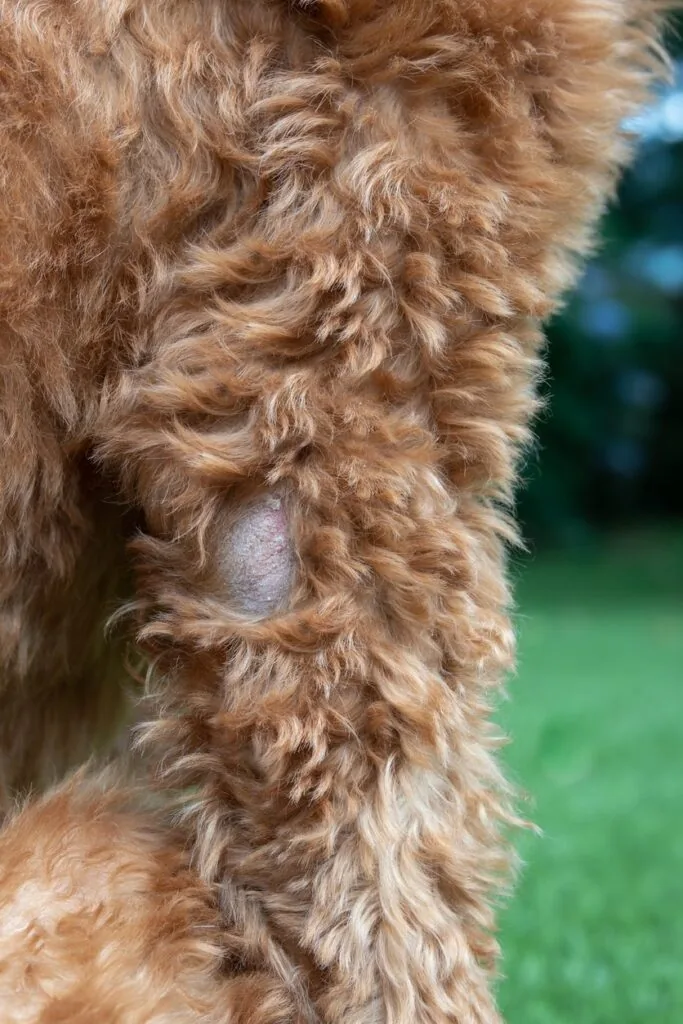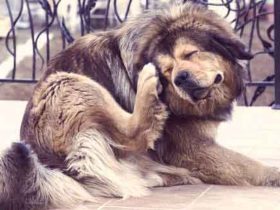To treat dry skin on dogs, use moisturizing shampoos and provide a balanced diet rich in essential fatty acids. Consult your vet for persistent issues.
Dry skin on dogs can cause discomfort and lead to more serious health problems if not addressed. Symptoms include flakiness, itching, and redness. Common causes range from environmental factors like dry weather to nutritional deficiencies. Using moisturizing shampoos can provide immediate relief.
Ensuring your dog has a balanced diet with essential fatty acids is crucial for long-term skin health. Regular vet check-ups can help identify underlying issues early. By taking these steps, you can ensure your dog’s skin remains healthy and hydrated. Proper care and attention to your dog’s needs can greatly improve their quality of life.
Causes Of Dry Skin In Dogs
Dry skin on dogs can be a sign of various issues. Understanding the causes helps in finding the right treatment. Here, we explore common triggers and allergens that can lead to dry skin.
Common Triggers
Several factors can cause dry skin in dogs. Below are some common triggers:
- Poor Diet: Lack of essential nutrients can affect skin health.
- Weather Changes: Cold or dry weather can dry out the skin.
- Frequent Bathing: Overbathing removes natural oils from the skin.
- Dehydration: Not drinking enough water leads to dry skin.
Allergies And Irritants
Allergies and irritants are significant causes of dry skin. These can include:
- Food Allergies: Some dogs are allergic to specific ingredients.
- Environmental Allergies: Pollen, dust, and mold are common culprits.
- Contact Irritants: Shampoos, soaps, and cleaning products can irritate the skin.
Identifying the specific cause is crucial for effective treatment. Keep an eye on symptoms and consult your vet for a tailored approach.
Symptoms To Watch For
Dry skin on dogs can be a sign of underlying health issues. Identifying the symptoms early can help prevent further complications. Here are the key symptoms to watch for in your furry friend.
Visible Signs
Dry skin often manifests through visible signs. These are easy to spot during regular grooming or petting.
- Flakiness: You may notice flakes of skin, similar to dandruff.
- Redness: The skin can appear red and irritated.
- Scabs: Small scabs might form due to excessive scratching.
- Hair Loss: Patches of missing fur can indicate dry skin.
Behavioral Changes
Behavioral changes can also indicate dry skin in dogs. These changes often stem from discomfort or irritation.
- Frequent Scratching: Your dog may scratch more than usual.
- Excessive Licking: Constant licking of specific areas is a common sign.
- Restlessness: Your dog might seem restless or unable to settle down.
- Rubbing Against Objects: Rubbing against furniture or walls can be a way to relieve itchiness.
| Visible Signs | Behavioral Changes |
|---|---|
| Flakiness, Redness, Scabs, Hair Loss | Frequent Scratching, Excessive Licking, Restlessness, Rubbing Against Objects |
Early detection of these symptoms can lead to quicker treatment. Always consult your vet for the best advice on managing dry skin in dogs.
Diet And Nutrition
Diet and nutrition play a crucial role in managing dry skin on dogs. By providing the right nutrients, you can improve your dog’s skin health and overall well-being.
Essential Nutrients
Certain nutrients are vital for maintaining healthy skin in dogs. These include:
- Omega-3 and Omega-6 fatty acids: Found in fish oil and flaxseed, these fats keep the skin hydrated.
- Vitamin E: This antioxidant helps in repairing and protecting skin cells.
- Zinc: Important for skin repair and overall immune function.
- Protein: High-quality protein supports skin regeneration and health.
Ensuring your dog gets these nutrients can help alleviate dry skin issues. Consider adding supplements if their diet lacks these essentials.
Food Allergies
Food allergies can contribute to dry skin in dogs. Common allergens include:
- Beef
- Chicken
- Dairy
- Wheat
Identifying and eliminating allergens from your dog’s diet can improve their skin condition. You might need to try an elimination diet to pinpoint the allergen. Consult your vet to create an appropriate diet plan.
Sometimes, switching to a hypoallergenic diet can work wonders. These diets contain novel proteins and carbohydrates that are less likely to cause allergies.
Remember, a balanced diet is key to your dog’s health. Always ensure they get the right nutrients and avoid potential allergens.
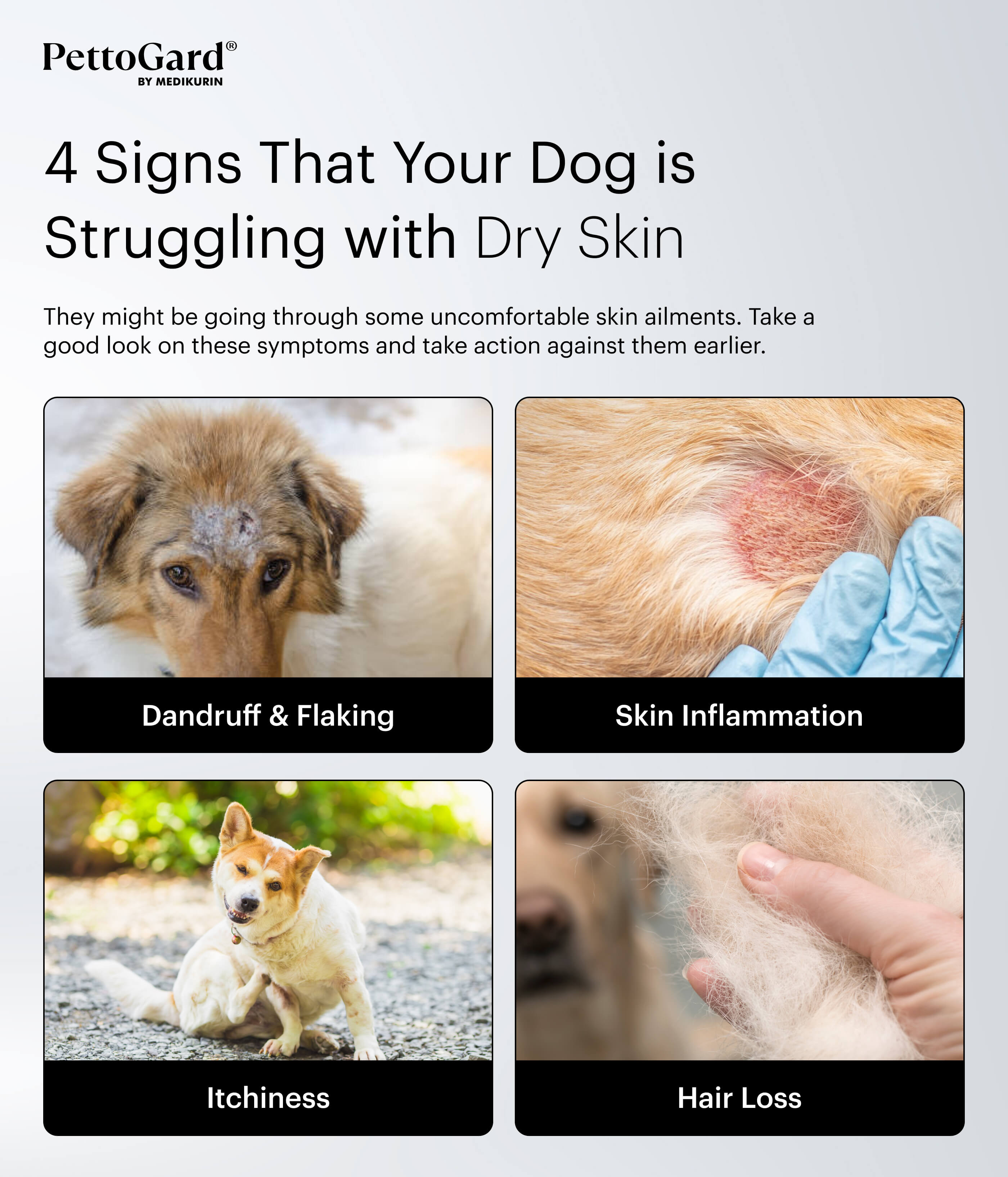
Credit: medikurin.com
Hydration Importance
Dry skin on dogs can be a troubling issue. Ensuring proper hydration is crucial for maintaining healthy skin. Hydration affects your dog’s overall well-being and skin health. Proper hydration can help alleviate dryness and itchiness.
Water Intake
Make sure your dog drinks enough water daily. Fresh water should always be available. Dogs need water to keep their skin hydrated. Monitor your dog’s water intake to ensure they drink enough.
| Dog Weight | Daily Water Intake |
|---|---|
| Small (up to 20 lbs) | 1-2 cups |
| Medium (21-50 lbs) | 2-4 cups |
| Large (51-90 lbs) | 4-6 cups |
| Extra Large (91+ lbs) | 6+ cups |
Hydrating Treats
Offer your dog hydrating treats to boost their water intake. Consider fruits and vegetables that are safe for dogs. Some options include:
- Cucumber slices
- Watermelon (seedless)
- Apple slices (without seeds)
- Carrot sticks
These treats contain high water content. They help keep your dog’s skin hydrated. Hydrating treats are also a tasty reward for your dog.
Bathing Practices
Bathing practices play a crucial role in maintaining your dog’s skin health. Proper bathing can help alleviate dry skin and keep your furry friend comfortable.
Shampoo Selection
Choosing the right shampoo is key to managing dry skin on dogs. Look for shampoos specifically formulated for dogs with dry skin. These shampoos often contain moisturizing ingredients like oatmeal or aloe vera.
Avoid using human shampoos as they can be too harsh for your dog’s sensitive skin. Always check the label for natural and hypoallergenic ingredients. This ensures the shampoo won’t cause further irritation.
Bath Frequency
Bath frequency is another important factor in managing dry skin. Over-bathing can strip natural oils, leading to even drier skin. Generally, bathing your dog once a month is sufficient.
If your dog has severe dry skin, consult your vet. They may recommend a specific bathing schedule tailored to your dog’s needs. Use lukewarm water as hot water can worsen dry skin.
Moisturizing Solutions
Dry skin on dogs can cause discomfort and health issues. Moisturizing solutions can help soothe and heal your dog’s dry skin. Here, we’ll explore natural oils and commercial products to keep your dog’s skin healthy and hydrated.
Natural Oils
Natural oils are excellent for moisturizing your dog’s skin. They are safe, effective, and chemical-free. Here are some popular options:
- Coconut Oil: Coconut oil is rich in fatty acids. It helps in moisturizing and reducing inflammation. Apply a small amount to the affected areas.
- Olive Oil: Olive oil is another great option. It is packed with antioxidants and essential vitamins. Massage a few drops into your dog’s skin.
- Fish Oil: Fish oil is high in omega-3 fatty acids. It promotes healthy skin and a shiny coat. You can add it to your dog’s food.
Commercial Products
Several commercial products are designed to treat dry skin in dogs. They offer convenience and specific formulations for different needs. Here are some examples:
| Product | Benefits |
|---|---|
| Medicated Shampoos: | These shampoos contain soothing ingredients like oatmeal. They relieve itching and dryness. |
| Moisturizing Sprays: | Sprays provide instant relief. They are easy to apply and absorb quickly. |
| Topical Creams: | Creams are great for targeted treatment. They penetrate deeply to hydrate the skin. |
Each of these products has unique benefits. Choose the one that best suits your dog’s needs.
Environmental Factors
Environmental factors play a big role in your dog’s skin health. Dogs can suffer from dry skin due to various environmental reasons. Understanding these can help in providing the right care.
Humidity Levels
Low humidity can cause your dog’s skin to become dry and flaky. High humidity can lead to skin infections. Keeping an eye on humidity levels helps in maintaining healthy skin.
| Humidity Level | Effect on Skin |
|---|---|
| Low | Dry, flaky skin |
| High | Possible skin infections |
Use a humidifier to maintain ideal humidity levels at home. Aim for a range of 40-60% humidity.
Indoor Air Quality
Poor indoor air quality can also contribute to your dog’s dry skin. Dust, mold, and pet dander can worsen the condition. Ensuring good air quality is essential.
- Use air purifiers to remove dust and allergens.
- Vacuum regularly to keep the environment clean.
- Keep your home well-ventilated.
Maintaining a clean home environment can significantly reduce skin issues in dogs.
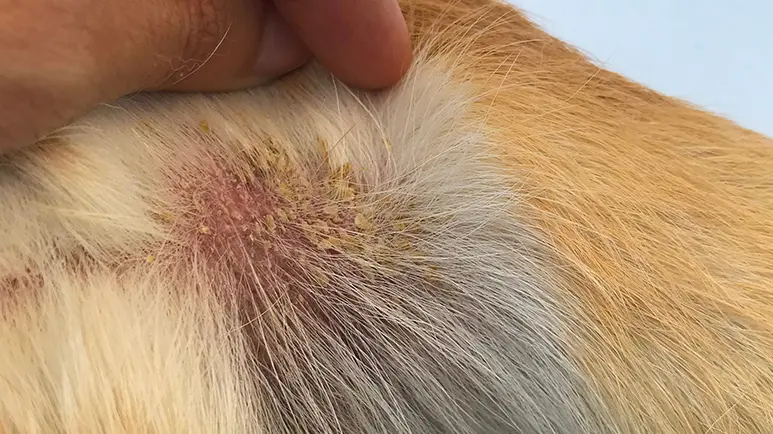
Credit: www.barkandwhiskers.com
When To See A Vet
Dry skin on dogs can sometimes be managed at home. But there are instances when professional help is needed. Knowing when to take your dog to the vet is crucial. Early intervention can prevent more severe issues.
Persistent Issues
If dry skin persists despite home treatments, it’s time to see a vet. Persistent itching, redness, or sores are signs of a more serious problem. These symptoms can indicate infections, allergies, or parasites.
Here are some signs to watch for:
- Constant scratching or licking
- Red, inflamed patches
- Sores or scabs
- Hair loss
These symptoms suggest that your dog needs professional care. Early detection can save your dog from discomfort.
Professional Treatments
Vets offer various treatments for dry skin. They can prescribe medicated shampoos or ointments. These products target specific skin conditions effectively.
Here is a quick look at some common treatments:
| Treatment | Purpose |
|---|---|
| Medicated Shampoos | Relieve itching and inflammation |
| Topical Ointments | Heal sores and reduce redness |
| Antibiotics | Treat bacterial infections |
| Antifungals | Combat fungal infections |
In some cases, vets may also recommend dietary changes. Proper nutrition can improve skin health. Omega-3 fatty acids and other supplements can be beneficial.
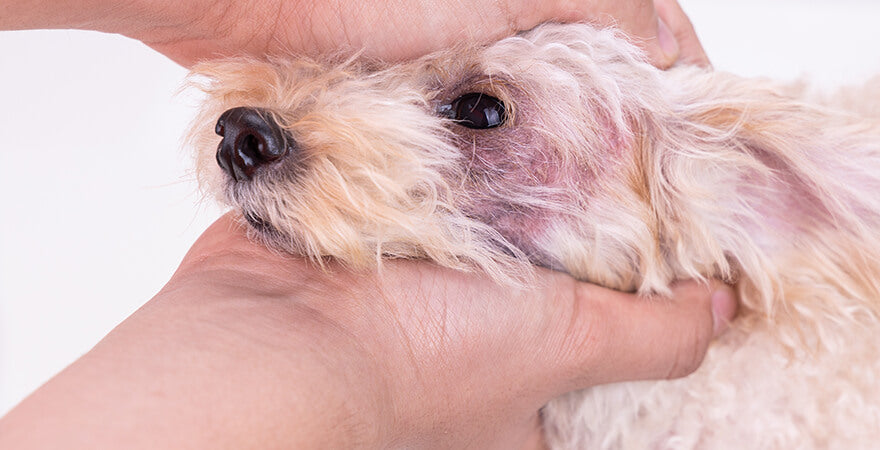
Credit: livelypaws.com
Frequently Asked Questions
What Causes Dry Skin On Dogs?
Dry skin on dogs can be caused by allergies, poor diet, and environmental factors. Parasites and infections can also contribute.
How Can I Treat My Dog’s Dry Skin?
Treat your dog’s dry skin with proper grooming, a balanced diet, and moisturizing shampoos. Consult your vet for advice.
What Are The Symptoms Of Dry Skin In Dogs?
Symptoms of dry skin in dogs include itching, flaking, redness, and dandruff. Your dog may scratch or lick frequently.
Can Diet Affect My Dog’s Skin Health?
Yes, a balanced diet rich in essential fatty acids supports healthy skin and coat. Consult your vet for dietary recommendations.
Conclusion
Caring for your dog’s dry skin is crucial for their comfort and health. Choose the right treatments and consult your vet. Regular grooming, proper diet, and hydration can make a significant difference. Follow these tips to ensure your furry friend’s skin stays healthy and itch-free.
Your dog will thank you for it!

